When clients hear that our trainings include Applied Improvisation, they often immediately fear the worst. They worry that it means their employees will have to tell jokes, will be forced to do silly exercises, or will have to do some form of trust fall.
Applied improv is none of the above. So, what is Applied Improvisation?
What is Applied Improvisation?
At its basic level, applied improv is simply taking concepts, ideas, and techniques from the world of improvisation and applying them to business, relationships, and life.
It’s not joke-telling, silly activities, or the theater equivalent of Minute to Win It challenges. It is effective, experiential learning that inspires, educates, and entertains.
With this is mind, it’s important to understand that applied improv is a not a what, but a how.
It’s how we train incredibly valuable business skills such as communication, collaboration, innovation, problem-solving, and leadership. It’s how we instill a culture of growth mindset, build psychological safety, and embrace authentic leadership. It’s how we learn to be more effective at what we do.
As our good friend Kat Koppett says, improv is the gym. It’s a way to get reps building valuable skills in a low-risk, effective way.
The Benefits of Applied Improvisation
So, now that you know what is applied improvisation… Why is applied improv so important? Why do we incorporate applied improv into our programs? Because it works.
There are five primary benefits to using applied improv in training and development:
#1. Participants experience the learning.
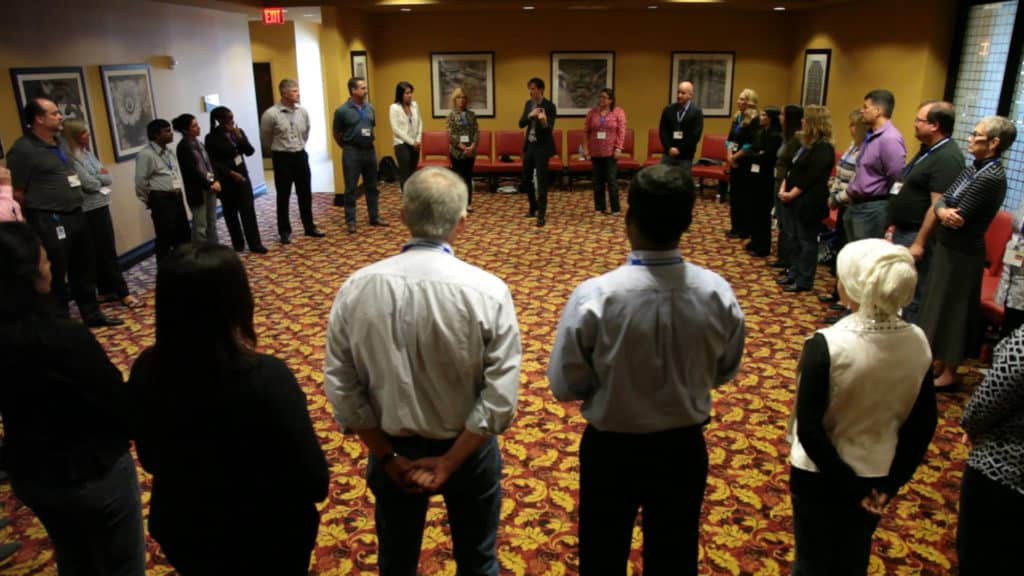
Remember as a kid when your parents told you not to touch the stove because it was hot, but you touched it anyway and burned yourself? And after that, you never touched the hot stove again? You know that the things you learn from experience have a more lasting impression than the things you learn because someone told you.
So much of today’s training is the equivalent of a parent telling you not to touch the stove. Lectures are great for introducing an idea like growth mindset, but it’s not how we learn to actually live it.
Applied improv serves as the hot stove where you experience the lesson (but without the burn). Rather than be told what’s important, participants go through an activity that helps them come to the learning point on their own. It’s one thing to hear an idea, it’s another thing to experience it.
#2. Participants practice the skills.

Imagine you’ve decided you wanted to become a violinist. To do this, you wouldn’t just read a bunch of books on what it means to play the violin and then immediately step on stage in front of thousands of people. Instead, you might do some of that reading, but mostly you would practice. A lot. Before you ever stepped foot on stage, you would have spent hours practicing scales, exercises, and songs.
And yet, when we train business skills, we have people go sit in a lecture and then expect them to be able to implement those ideas immediately, without any practice or experience. Listening to a talk on communication is like listening to a talk on how to be a violinist–it won’t be effective unless you can practice what you’ve learned.
Applied improv gives participants an opportunity to practice new skills so they can be more effective immediately. A trainer doesn’t just talk about the importance of listening to understand, the participants actually have an opportunity to build their skill in doing so.
#3. Participants feel safe to try new things.
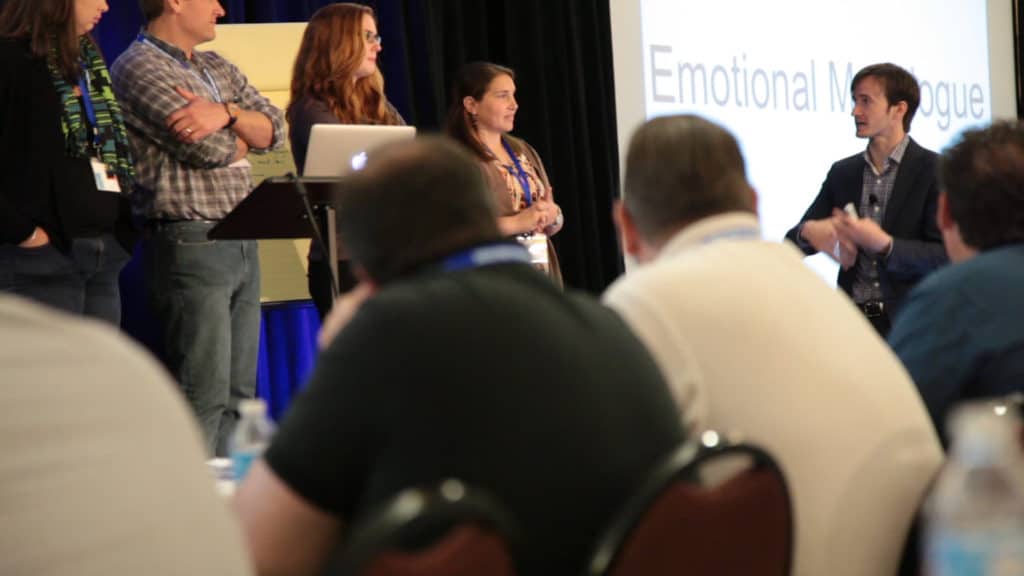
Think back to the first time you learned how to ride a bike. How did it go? Did you pedal to glory on your first attempt? Probably not. If you’re like me, you fell on your first few tries but eventually you got better and before you knew it, you were riding down the entire length of the street (only to realize you didn’t know how to stop).
Failure is a key part of any learning experience; it’s how you learn to make adjustments and determine what works and what doesn’t. But failing in our jobs can have consequences. A first time leader can be at risk of demotivating their employees while trying to learn what it means to lead.
Applied improv provides a safe environment for the participants to try new things and to fail in a low stakes environment. Participants learn what works and doesn’t work in a classroom instead of in the middle of an important project for their company.
#4. Participants build relationships with each other.
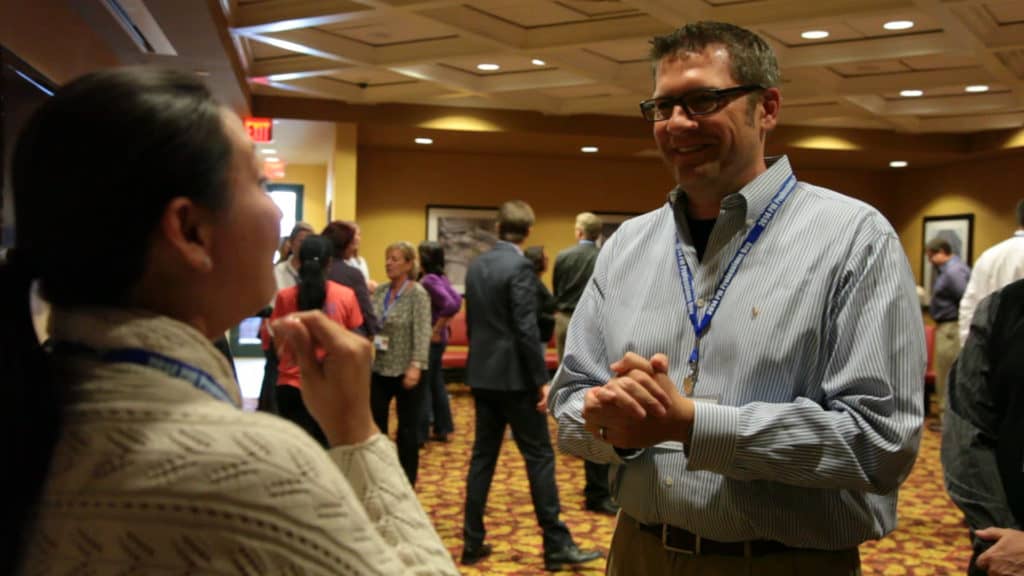
Of all the people you work with, who do you have the best relationships with? Chances are it’s the people who you have something in common with: maybe you work in the same department, sat next to them at a training, or have bonded over your mutual love of the show Game of Thrones.
That’s how all relationships are formed, through shared interests and shared experiences. Relationships, both internal and external, are a vital part of any company; it’s why Google determined that the most important trait of an effective team is psychological safety.
Applied improv creates a positive shared experience that helps build the relationships of the people in the room. You could learn about psychological safety by listening to someone talk about it, or you could do it through interacting with your fellow participants, learning about each other, becoming closer together, and actually building that safety in the room.
#5. Participants have fun using Applied Improv!
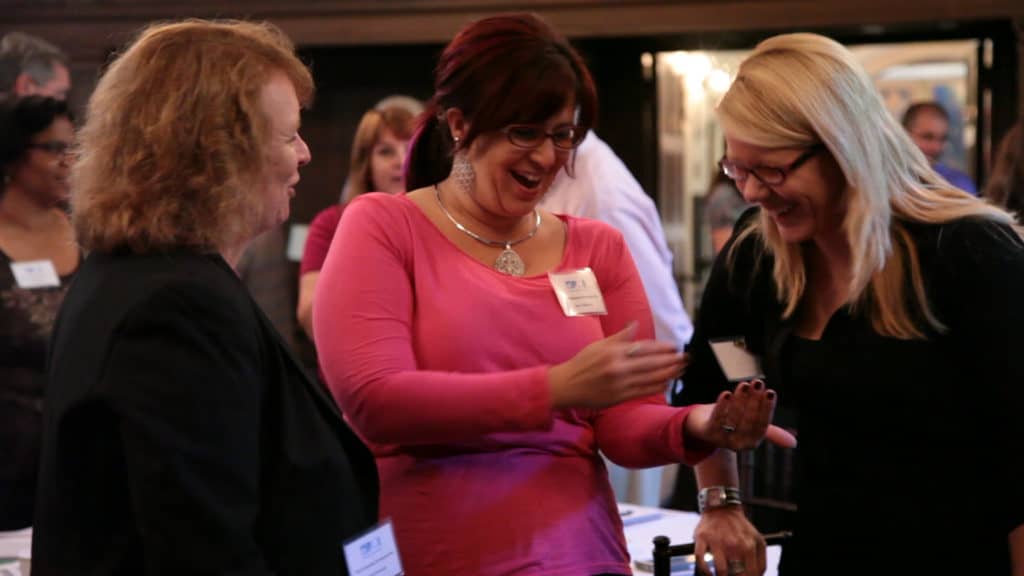
Which would you rather do: sit in a room and be bored or laugh with your peers and have fun? Which would you learn more from? Which would leave you with a more lasting impression? Which would you think more positively about and share with others? I’ll take “laugh with my peers and have fun” every time.
Sadly, many of today’s corporate trainings are death-by-PowerPoint boring. Learning about a topic as interesting as innovation can still be heart-wrenchingly dreadful. The simple truth is that you quickly forget about boring experiences and become more invested in the things you find enjoyable (duh).
Applied improv is fun. Not in a “corporate is telling us this is fun so it’s actually going to be awful” way, rather in an actual “I haven’t laughed like this at work in years” way. The exercises are geared to be entertaining and the fun doesn’t come from cracking jokes, and by having authentic moments with the other participants. As a result, you learn the keys to something like being more innovative while staying actively involved in the learning experience.
Getting Started with Applied Improvisation
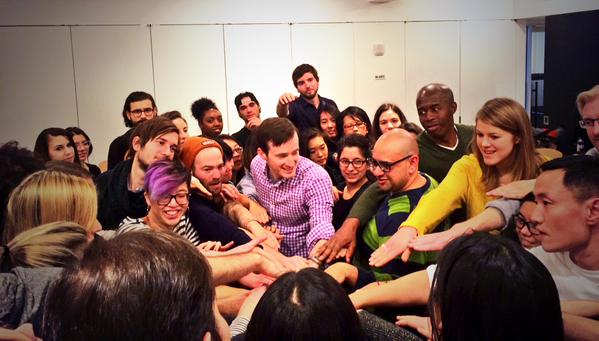
Applied improv is a crucial component of all of my trainings because it works. It’s effective, engaging, and entertaining all at the same time. It’s why Humor That Works has delivered trainings at more than 200 organizations at corporate offsites, conferences, and for organizational team building. To learn more, check out the Humor That Works Programs.
What is applied improvisation, What is applied improvisation, What is applied improvisation, What is applied improvisation, What is applied improvisation, What is applied improvisation, What is applied improvisation, What is applied improvisation, What is applied improvisation


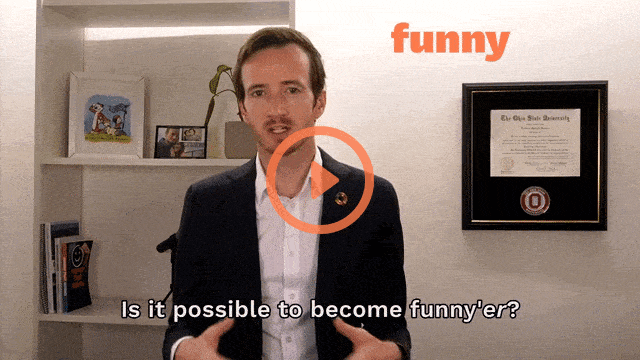

Pingback: Applied Improvisation: 7 Fields Improv is Transforming : Play your Way Sane
Hi,
I am an applied psychology graduate student at Pacific University. I am looking to do a research project involving applied improvisation, and it’s effect on social anxiety. My idea is to do exposure therapy using 1-3 sessions of improvisation to treat social anxiety. I am interested in the application of improvisation to social anxiety/fear of public speaking/ generalized anxiety/ and as a behavioral activation technique for depression. Please get back to me, I am a student in my last year of psychological training and currently have the means of completing this research. I need information of current and past Improv research, and articles relating to the subject. I am happy to continue, or expand on research that has already been done.
Kindly,
Sarah Glidden